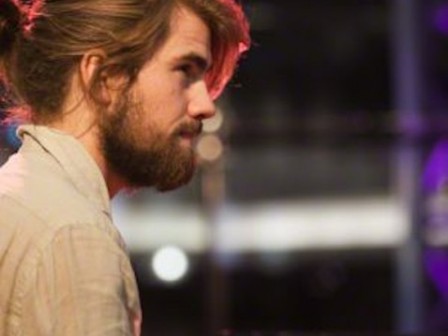
Kit Downes explains the background to Trickotareco
Does writing for piano, cello, and organ pose particular challenges; and if so what might these be?
Kit Downes: Actually writing for this combination (rather than a more traditional jazz format) opens up more opportunities than before. There is so much space to play with – and two instruments with big, rich ranges to fill it.
Another thing is that this kind of music written for piano and cello is less common, so it comes with less baggage in a way – less preconceptions as a listener and composer about what you’re hearing. So it allows quite a blank canvas with which to work with. The great thing about the cello in this context is that it can act as melody line, bass line, counter-melody, texture – it’s so versatile (as is the piano) – so the instrumentation is quite liberating in a way.
This line-up also allows me to play very quietly and detailed, and to play with musical elements such as dynamics and articulation in a very clear but understated way, something that is hard to do with more instruments. Also being a duo, there is a lot of freedom and shared responsibility, another thing that is hard to find in a larger ensemble.
How much overdubbing, if any, is involved on the Trickotareco project, and if so is that a process that you relish?
Kit Downes: The only overdubbing is the organ, as I obviously can’t play it at the same time as I play the piano. But yes, I do enjoy this process; and I do enjoy editing and sometimes moving things around in the song to get a different colour or flow. I like the duality of being very much in the moment and very subjective while performing, and then attempting to be a little more objective and holistic in the approach when editing and mixing.
How does the organ in the Trickotareco context differ to its use in Troyka?
Kit Downes: It’s a different instrument primarily; the organ in Troyka is a Hammond organ, which has a long history in gospel music, blues and jazz, whereas the organ in Trickotareco is a church organ, where its history lies mostly in religious music but still with a strong tradition of improvisation attached to it. I treat them as different instruments really; although there are many technical playing elements which are the same. Playing church organ also brings up a whole different set of my previous listening to me, composers like Messiaen, Duruflé, Vierne, spring to mind, alongside other parts of my listening that I use more often.
Listen to ‘Alliri’ by clicking above, a new piece from Trickotareco where Kit Downes is joined by cellist Lucy Railton
The piece above, ‘Alliri’, has an unusual title as does the album project itself. Could you shed some light on the titles, and maybe add a few technical remarks about the piece structurally, eg the modes, how the harmony resolves itself, and the tonal aspects?
Kit Downes: The title is open for interpretation, I decided a little while back that I didn’t want to tell people particularly what my songs were about, but allow the title to give an impression of a suggestion of what it might be about.
In terms of how it is written, it is all written around a central theme heard in different contexts. It is also all in 7/8, but varies in how explicitly it spells this out. Harmonically it moves around a bit, but for the most part is somewhere between D major and A major (moving to C minor briefly). One thing I wanted to do is at the beginning (after the introduction) to have a passage where I put all the ingredients of the song into one dense bit of writing, a passage that contains everything but in only a few seconds in the way that it’s arranged. Then hopefully in the rest of the song some bits will feel familiar, as you have heard them briefly before, all mashed together at the start. It’s something I heard in Django Bates’ writing that I really liked, it’s almost fractal in a way; every big gesture represents every small gesture, a kind of inner-logic.
What sort of studio ambience, and input from the engineer, do you like when you record?
Kit Downes: Sensitive, alert and completely on top of everything! A good engineer knows when to offer his/her advice or not (unless it is his/hers project, and then they can do whatever they want!). Alex Killpartrick engineered this and all of our other stuff for us, he’s great. In terms of studio, it really depends on what type of music I’m trying to capture. Sometimes my front room is the best space suited to what I’m trying to do, sometimes a cathedral is, though to be honest I rarely use recording studios that much any more. There is technology, and clever people like Alex Killpartrick around that can record you anywhere, so I try not to limit myself to one space.
Interview: Stephen Graham
Kit Downes and Lucy Railton play St James’ theatre, London on 2 April